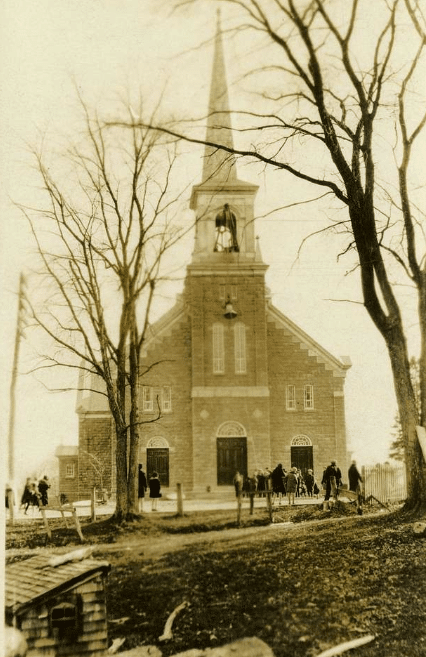A Landmark Erased from Quebec’s Architectural Heritage
In the heart of Gatineau’s historic Hull district, once stood Notre-Dame-de-Grâce Church, a striking example of traditional Canadian church architecture. Built in 1892, it served not only as a place of worship, but as a vital social and cultural hub for the local community. In 1971, however, a devastating fire destroyed the church, leading to its eventual demolition. With it disappeared a cherished symbol of the neighborhood’s identity.

A Structure of Remarkable Character
The church embodied the essence of local architecture, with its stone masonry walls and metal roofing, typical of late 19th-century Canadian design. The main steeple towered proudly, ending in a slender spire topped with a cross. Large round windows adorned the façade, while tall, narrow windows lined the sides, allowing natural light to pour in and emphasize the church’s verticality and elegance.
Architectural Highlights:
| Feature | Description |
|---|---|
| Materials | Local stone and metal roof (likely zinc or tin) |
| Style | Traditional Canadian with Gothic influences |
| Main tower | Tall spire with a cross at the top |
| Windows | Round windows in the front; tall vertical windows on the sides |
| Surroundings | Simple garden, scattered trees, and partially unpaved grounds |

The Fires of Hull: When History Burns Fast
The Hull district is known for its industrial heritage and dense urban layout, where buildings were often built in close proximity. This made the area particularly vulnerable to fire outbreaks. Over the decades, several historic structures were lost to flames, including Notre-Dame-de-Grâce Church, which was consumed entirely by fire and left beyond restoration.
From Spiritual Heart to Modern Emptiness
After the church was lost, no serious attempt was made to preserve or commemorate the site’s architectural or historical significance. Instead, the area became home to a Four Points hotel, a structure that, for many, lacks any cultural or aesthetic connection to the neighborhood’s past.
This transition marked not just a change in land use but a loss of local identity and collective memory.

Final Reflections
The story of Notre Dame de Grâce is more than a tale of a fire or a demolished building. It reflects the importance of preserving architectural heritage as a living part of a city’s soul. While concrete can replace stone, it can’t replicate the emotional weight of memory and history.
ArchUp continues to track transformations in the construction industry, spotlighting projects that embrace innovation and reshape the urban landscape. The Museum of the Future is proof that when imagination meets dedication, the impossible becomes reality.







